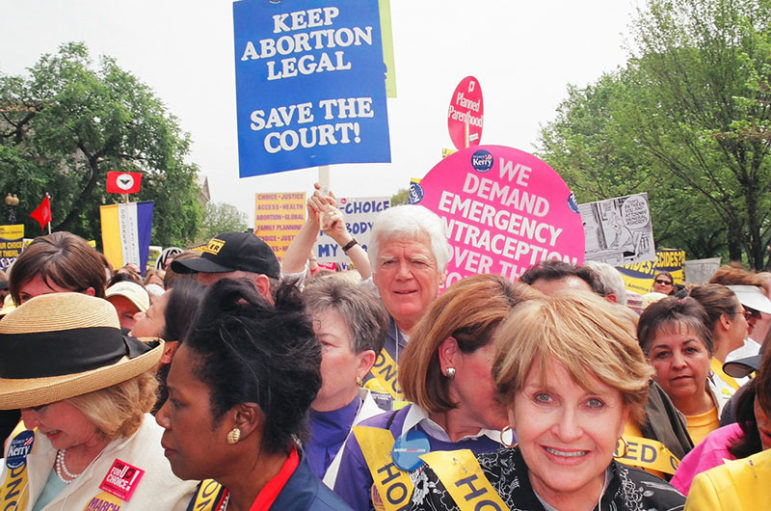
November 23, 2016; Slate
At a time when rage donations are surging and the fractured left is licking its wounds, hundreds of thousands of people are planning to march on Washington in support of women’s rights the day after President-elect Donald Trump’s inauguration.
An idea that started with a simple Facebook invitation post-Election Day has mushroomed into what could be a historic event, with nearly 225,000 people “interested” in the march online and potential state rallies planned across the country. Just last week, the event moved closer to reality, with a website launched and news of a meeting between organizers and the offices of the National Park Service, Homeland Security, and the Metropolitan Police Department to put together a unified rally and march plan.
“On January 21, 2017, we will unite for the Women’s March on Washington,” the website says. “We stand together in solidarity with our partners and children for the protection of our rights, our safety, our health, and our families—recognizing that our vibrant and diverse communities are the strength of our country.”
But, as the Women’s March on Washington quickly turned into a catch-all protest representing just some of the millions of people who didn’t vote Trump, the original organizers wisely brought in professionals when the initiative’s message and inclusivity were widely criticized, according to Slate.
If and when the march does come together, it will be due to the expertise of three veteran organizers—[Carmen] Perez, Linda Sarsour, and Tamika Mallory—who stepped in to steer the vessel when it became clear that the Facebook-event creators were in far over their heads. The first sign that a small group of white women with little relevant experience was ill-equipped to plan a major protest came with widespread criticism of the original name, the Million Woman March. When I got a Facebook invite to the event just two days after the election, the page was already flooded with comments demanding the organizers change the name to avoid appropriating the name and history of a massive 1997 march for black women in Philadelphia… Activist Brittany Oliver and others pushed the organizers to make their committee and goals more representative of all American women, especially women of color, transgender women, immigrant women, and Muslim women, who stand to suffer the most under the racism and Islamophobia that Trump’s candidacy has unleashed.
Sign up for our free newsletters
Subscribe to NPQ's newsletters to have our top stories delivered directly to your inbox.
By signing up, you agree to our privacy policy and terms of use, and to receive messages from NPQ and our partners.
According to a Huffington Post article, the three seasoned leaders represent minority groups that are under attack by the Trump administration. Carmen Perez is the executive director for The Gathering for Justice, an inter-generational, inter-cultural social justice, civil rights organization rooted in history, spirituality and nonviolence direct action founded in 2005 by Harry Belafonte. Linda Sarsour is executive director of the Arab American Association of New York, and Tamika Mallory is the New York City co-chair for the Gun Violence Awareness Month Initiative, a statewide program of education and awareness around gun violence intervention and prevention.
Slate writer Christina Cauterucci’s in-depth look at the making of the march raises two important questions: How can white progressives turn anger into action, and how can professional organizers and nonprofits help harness that energy to further the social justice movement? She also offers important lessons on ensuring your own change-making efforts and messaging are inclusive and thoughtful and creating a just-in-case emergency plan.
Cauterucci argues that the country’s large gender-justice organizations should have been more ready to capitalize on liberal women’s intense feelings post-election.
In some ways, the Women’s March on Washington’s garbled message, logistical missteps, and blunders on basic issues of intersectionality comprise a cautionary tale to the people who could have been prepared to harness the hunger for action that was sure to arise in the case of a Trump victory. Big-league reproductive-rights and gender-justice organizations—which would have been infinitely better-suited to organize a colossal women’s march than a random smattering of Facebook-event creators—should have had a visible and well-promoted plan for the worst-case scenario. They should have anticipated that women devastated by a Trump win would want some immediate blueprint, however nebulous, for protest.
Yet, perhaps this grassroots, if messy, effort better embodies the populist sentiment that is sweeping the country and the world.—Anna Berry











